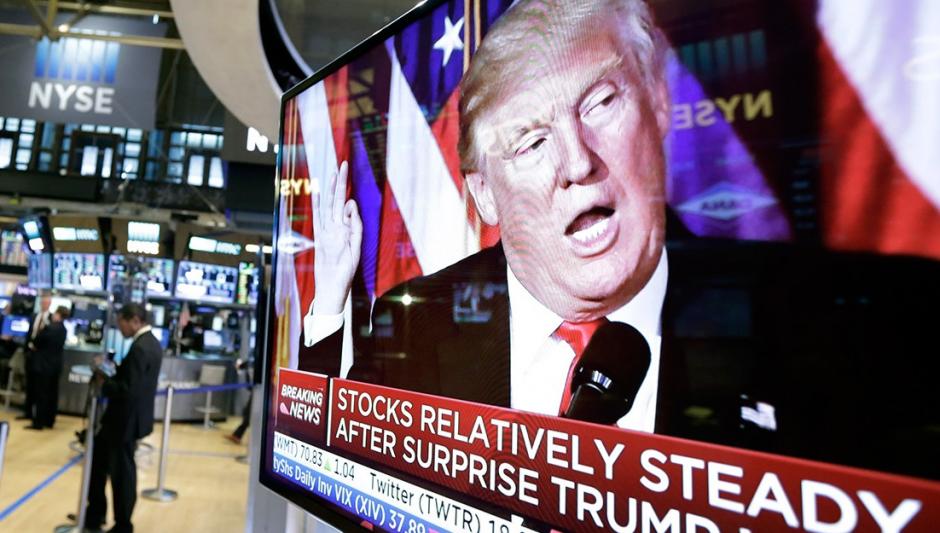Concerns are now growing over whether anything of substance will get done before the mid-term elections in 2018. With that unease, markets are beginning to look more fragile, with volatility picking up and a bid being lent back to the bond markets.
Markets detest uncertainty, and the longer the soap opera now engulfing Washington plays out, the less patient investors are likely to be. We remain cautiously optimistic that a pro-business, pro-growth agenda rises out of DC, but we’re not willing to bet the ranch on it. We don’t see a large-scale systemic risk looming on the horizon; however, equity valuations have a fairly predictable mean-reverting tendency.
At some point, either earnings need to grow 10%+, or stock prices need to fall 10-15%. We’re hoping for the former. But in case of the latter, that’s why we own bonds: Capital preservation.
The Fed, having raised interest rates a quarter point in March, is on record as wanting to raise two more times in 2017. Let’s hope they do. Interest rates are far from usurious, and the more “normal” they get, the more savers can earn without having to take undue risk. Bond yields should drift higher in 2017, but overseas demand will likely keep a lid on government yields, at least for now. We figure 3.00% on the 10-year Treasury note is a reasonable year-end target. Speaking of overseas, we like valuation levels in emerging markets and some developed markets far more than the US.
After enduring years of maddening underperformance relative to the US, foreign markets are starting to perk up here in 2017. While the S&P 500 returned 6.0% in the first quarter, the MSCI EAFE index (international developed-market index) gained 7.4% while the MSCI EM index (emerging markets index) shot up 11.4%.
A lot of slow growth and bad news has been priced into these markets (in stark contrast to the US), and we’re just starting to see some green shoots evidencing growth in many of these long-dormant economies.
From a cyclical standpoint, it would seem to us that foreign markets are in the initial innings of a longer-term move whereas here in the US, we might be in the bottom of the 8th (given that major league baseball recently celebrated its opening day, I think a baseball metaphor might be apropos).
While we might go to extra innings here in the US if we get lucky and Congress comes through for us, I’d say we stand an equal chance of the game ending in the 9th. The question is whether it will be the top or bottom. Nevertheless, a solidly diversified portfolio remains an investor’s best bet for navigating the truly uncharted waters we now find ourselves in.
The “Trump-Trade” Fading
Investors appear caught between an over-valued US equity market and still unattractive fixed income prospects. While we feel there may be some relief to be found internationally, we wouldn’t be surprised to see investors push the US market up further.
There are little in the way of classic signs of mania in the market, and the past 7 years have proven pretty darn rewarding. Where we are Bond yields surged post-election as newly elected President Donald Trump promised near-term tax reform, infrastructure spending and an easing of the regulatory burden facing corporations. Hopes for a quick solution have faded, however, as Congress dithers over politics, seeing some signs of excess is in the real estate market.
The S&P CoreLogic Case-Shiller Home Price Index recently hit a new all-time high and we do think that the Fed’s low-interest rate policy is leading to an unsustainable growth rate in home prices in the US. Here at Nottingham, we’ve been establishing a bit of a defensive tilt for the better part of the past year or so. This didn’t work out too well for us last year as we trailed our benchmarks a tad; but, in time, we remain convinced that we’ll be vindicated.
The argument for the “relative” attractiveness of equities versus bonds has limits and we feel we’ve reached them. A backup in interest rates would be most welcomed by many investors and we do think a mild correction in equity prices will be healthy. Both the US and global economy remain sound. Our concerns center more around the law of averages – this is the 2nd longest bull market on record, while according to the National Bureau of Economic Research the average period of economic expansion since 1945 is 58 months – we’re at 96 months currently. But all need not end badly, assuming one is prepared.
A little dry powder never hurt as there are quite a few things we wouldn’t mind buying at slightly cheaper prices. Patience will be rewarded, as it usually is.
In Conclusion
After another reasonably mild winter here in the northeast, spring is upon us. With that, come renewed hopes for long, hot summer days, along with an optimism that only an abundance of sunshine can bring.
Despite some of the sobering tones above, we’re optimistic that meaningful fiscal stimulus will be implemented over the coming year or two. Corporate tax reform and, hopefully, repatriation of foreign profits should come about as well.
Remember, Ronald Reagan was elected in 1980, and between April of 1981 and August of 1982, the Dow fell nearly -24%! Tax reform didn’t take place until 1986, during his second term. I know the “Donald” and the “Gipper” had far different credentials for assuming the Oval office, my point being that inside the Beltway, substantive policy changes tend to take time.
Despite the headlines and “fake news” (one of my new favorite terms), good things can and will happen. Stay positive, and enjoy the sunshine.
Larry Whistler, CFA, is President/Chief Investment Officer at Nottingham Advisors, a participant in the ETF Strategist Channel.

